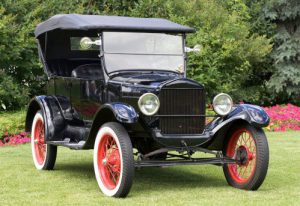No name is more associated with American business success than that of Henry Ford.
Make that global business success. Even Taiichi Ohno of Toyota, the automaker that ranks as one of the biggest in the world, is said to have studied Ford’s techniques and methods to create the Japanese automaker’s universally praised manufacturing methods.
Henry Ford hated waste. He drove himself – and his employees – to correct operational inefficiencies while also creating better products.
Is it any wonder, then, that Ford is considered the “Father of Lean Manufacturing”?
Ford Founds Lean
The history of Lean manufacturing truly begins with Ford and his ground-breaking automobile manufacturing company in the early 20th century. Students of Lean history typically begin with the Ford manufacturing plant in Highland Park, Mich., in 1913.
It was there that Ford manufactured the Model T. His focus was not on organizational structure. His focus was on making the best product possible.
To do so, he relentlessly pursued methods that eliminated waste and helped employees work more efficiently. He did not focus on making people work harder. He wanted people, and his company as a whole, to work smarter.
He had an admirable ability to see the “flow” associated with a process. In Ford’s case, that flow started with raw materials and ended with a customer driving away in a new car.
His integration of individual parts, human effort and moving conveyance marked the first time that Lean principles were put into practice. Essentially, Ford invented them.
Ford’s Innovations
Here are some areas where Ford established the baseline for the Lean and Six Sigma techniques to come.
Standardization – Ford’s production line did not provide for variation or deviation from the best practice. The employee who assembled the bumper for the car did so the same way, every day, once Ford determined the best way to do it.
High Wages – The bumper-assembly employee and everyone else also received good pay. Because his techniques resulted in such great profits, Ford paid his workers well, quadrupling their wages over 20 years.
Wasted Movement – Ford once wrote that farmers wasted 95% of their time on unproductive activities. He lamented that everything was done by hand and “seldom is a thought given to logical arrangement.” Ford gave many thoughts to logical arrangement. His factories were designed so that workers could accomplish their given tasks with the fewest steps and movements.
Wasted Materials – Automobile manufacturing results in unused material. Ford found uses for those products that did not go into his cars. For example:
- Distilling wasted wood into chemicals that was used for, among other products, charcoal
- Blast furnace slag was converted into road paving material
- Cooking of coal produced sulfur that was sold for use in fertilizers
Welding – Ford welded smaller parts together into a whole, rather than having large cast parts that required machine shaving.
Just-in-Time Manufacturing – Ford knew the importance of not creating large amounts of inventory and managed his supply chain to have enough materials on-hand to manufacturing his cars based on demand.
Customer service – Among other areas that served the customer, Ford smoothed out the delivery service so that cars consistently arrived on time as scheduled to the customer.
The list goes on and on. Entire books have been written on topic. Perhaps the best is the one Ford wrote himself.
Limitations
While Ford created techniques that led to Lean methodologies, the one area he did not account for was variation. His processes, while revolutionary, did not allow for the types of variations that modern businesses require.
In short, he was great at making a Model T. But when people wanted something other than a Model T, there were challenges.
However, the Toyota Production System (TPS) took Ford’s process a step further. Ohno and other company executives built upon Ford’s ideas and made changes to the manufacturing process that allowed for more variation in the workflow without creating untenable inefficiencies.
Much of it involved technical changes in how machines worked, the progression through the workflow and communication between different process teams.
But, in short, they found a way to make high quality, low cost products that met the changing desires of the customer.
Read: How Taiichi Ohno’s trip to Piggly Wiggly Supermarket Changed the World of Lean Manufacturing
Lean and the Automobile Industry
Things now have come full circle. While Ford founded many of the principles used in Lean manufacturing, they were perfected in Japan. Now, U.S. companies are learning from Six Sigma, which became a methodology pioneered in a non-automotive Japanese company, Motorola.
At Ford, 350 executives have received Six Sigma training and certification. More than 10,000 employees have been trained in the methodology. Automobile parts maker Southland C.N.C. uses Six Sigma methods in its choices of machines to meet manufacture’s specifications.
All of this has its roots with Henry Ford. Striking the best deals with suppliers. Managing inventory. Making improvements on the factory floor that lead to reduction of waste. Always keeping the final product – and the customer – in mind.
While he didn’t think of everything, Ford thought of enough to completely alter the landscape of business forever – making it much, much better.




